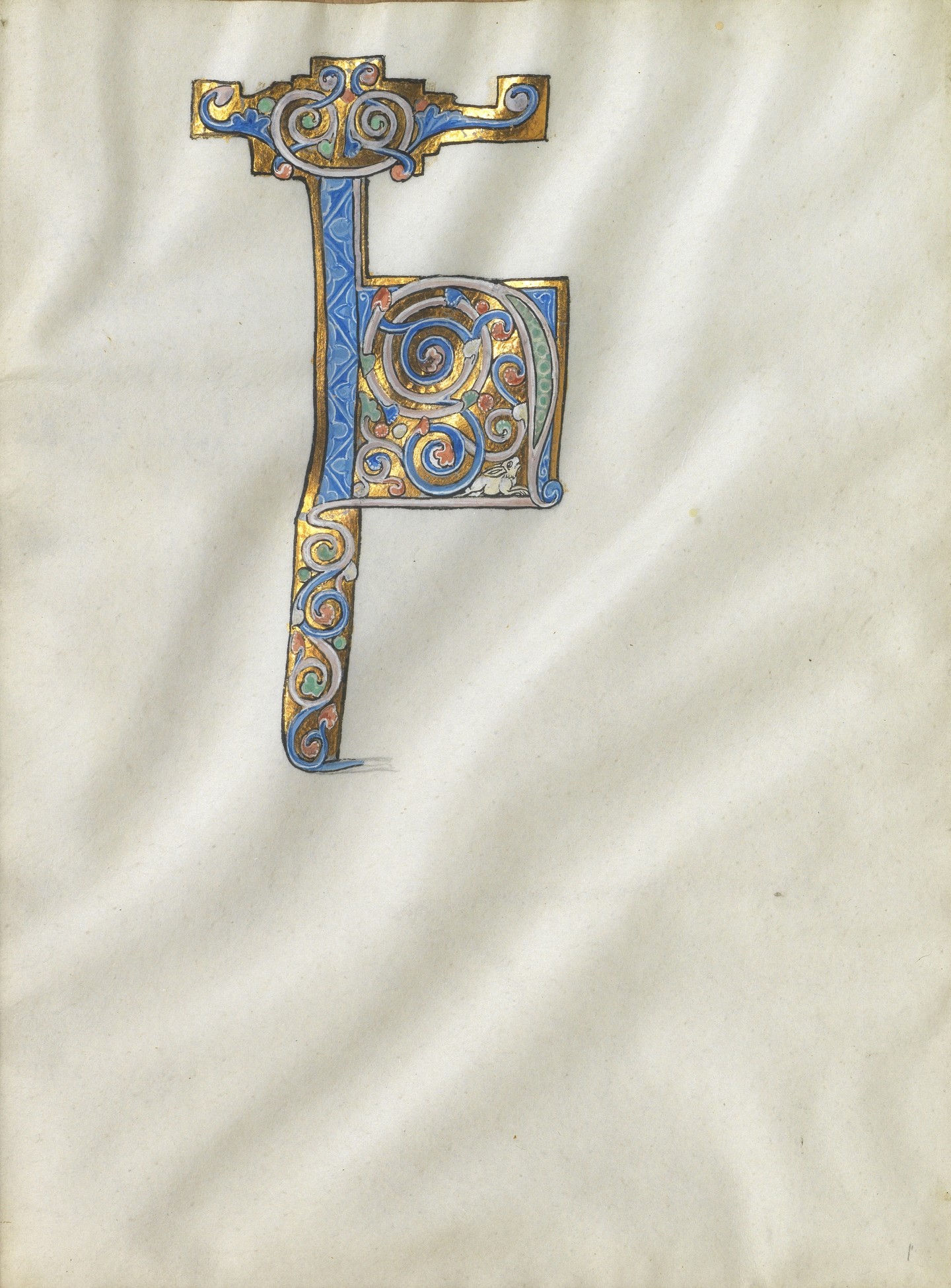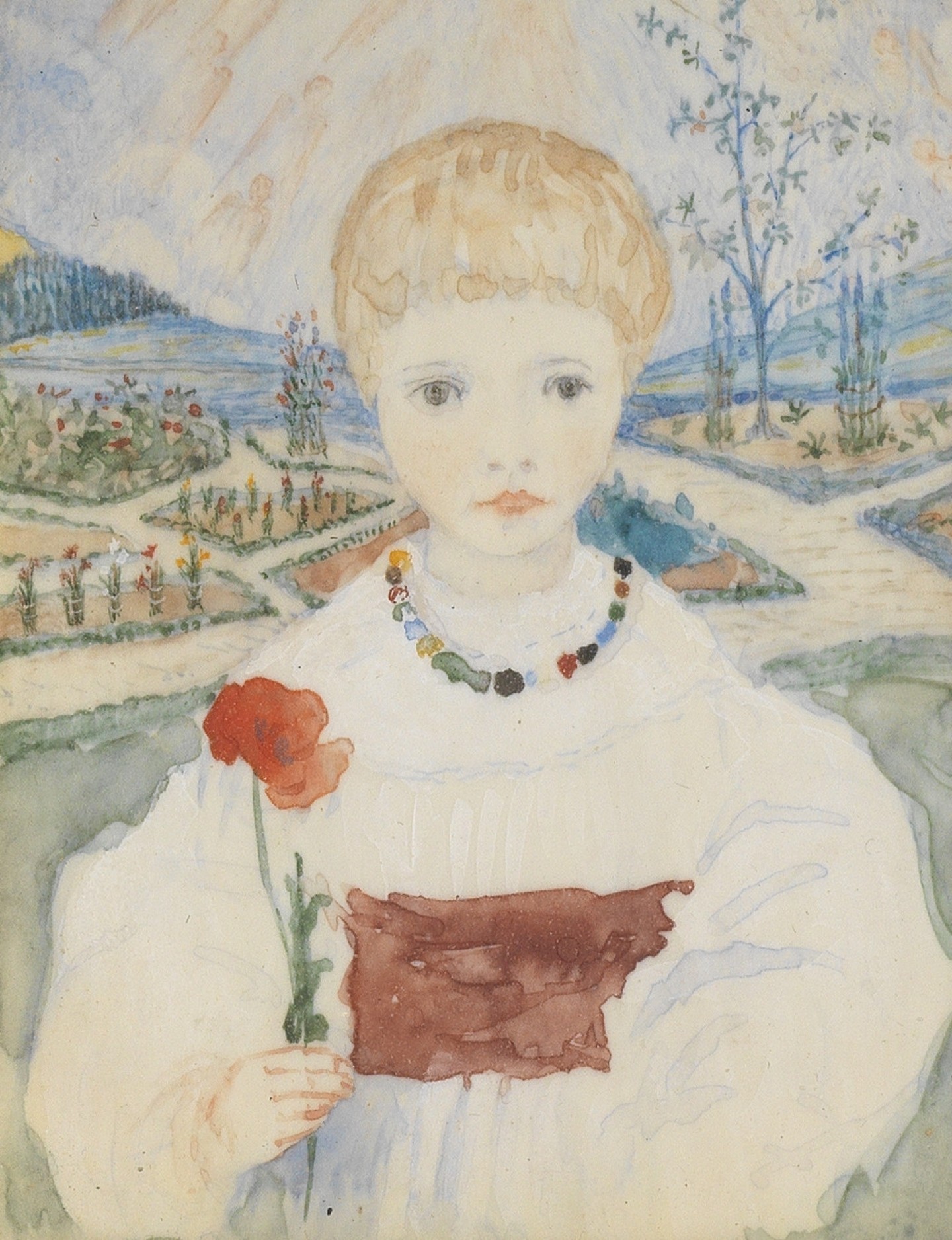DESCRIPTION
Most of Traquair’s surviving embroidery designs are for domestic items such as table covers. This one is for a panel of a draughtscreen – then a common piece of drawing room furniture in many middle-class homes. They were both practical and aesthetic although few were as fully artistic as those of Traquair. The ideas of the journey of the soul beyond death had filled her children’s hospital chapel and, perhaps surprisingly, were now to be embedded in a screen for her own home. She called this first embroidered screen The Salvation of Mankind (1886-1893, Edinburgh Museums and Galleries, City Art Centre).
This rare item is the only known working study for the second (left) of the three panels, The Souls of the Blest (embroidered c.1889-91). It would have been used as a clear reference when inking her linen with the design prior to stitching the piece. Traquair depicts six angels receiving the souls of the just from the Angel of Redemption, the focus of the central panel (stitched c.1886-87). Seven angels are shown in the finished embroidery, and they are surrounded by banks of cumulus clouds (representing air) and water, the latter to be translated into choppy waves and wonderfully still pools in the embroidery. The other two elements were to be found across the central and right screens: the Angel of Redemption holds a flaming skull, while earth dominates the composition of the right (third) panel, Souls waiting on Earth (1891-93). The testing of souls by the ordeal of fire was an idea long used in culture. Here, as in much of her art, Traquair fused many traditions with her imagination.
The Salvation of Mankind screen is witness to her changing figurative style from Pre-Raphaelite to the largely Renaissance-inspired naturalism of her Song School mural. Nonetheless, she would adapt this design in her illuminations of Stanza III of Dante Gabriel Rossetti’s poem Willowwood (1890, National Museums of Scotland, and as part of The House of Life, 1898-1902, National Library of Scotland).
DETAILS
-
Artist
Phoebe Anna Traquair
-
Date
c. 1890
-
Medium
Ink and watercolour on paper
-
Object number
3261
-
Dimensions unframed
35.5 × 25.5 cm
-
Subject
ARTIST PROFILE
Phoebe Anna Traquair HRSA, 1852 - 1936
From the 1880s to the 1920s Phoebe Anna Traquair was known as one of Scotland’s leading muralists and craft artists. The daughter of a Dublin doctor, she had been born and educated in Ireland and settled in Edinburgh with her zoologist husband Dr Ramsay Heatley Traquair (1840-1912). Traquair’s admired Greek sculpture and the romance of Pre-Raphaelite painting, medieval craft as well as modern engineering. Her mentors above all were the great poets and writers of the past and present including Dante, Blake and Rossetti. She struck up friendships with artists including William Holman Hunt and briefly corresponded with John Ruskin in the late 1880s. Ruskin lent her medieval manuscripts to study and copy, and these, together with her reading, inspired a series of glorious illuminations of poetry. Above all she always enjoyed the challenges of mastering traditional crafts from embroidery to leather bookcover tooling and, after 1900, art enamelling on copper and silver. She had a professional studio space within the Dean Studio in Lynedoch Place, Edinburgh, from 1890.







